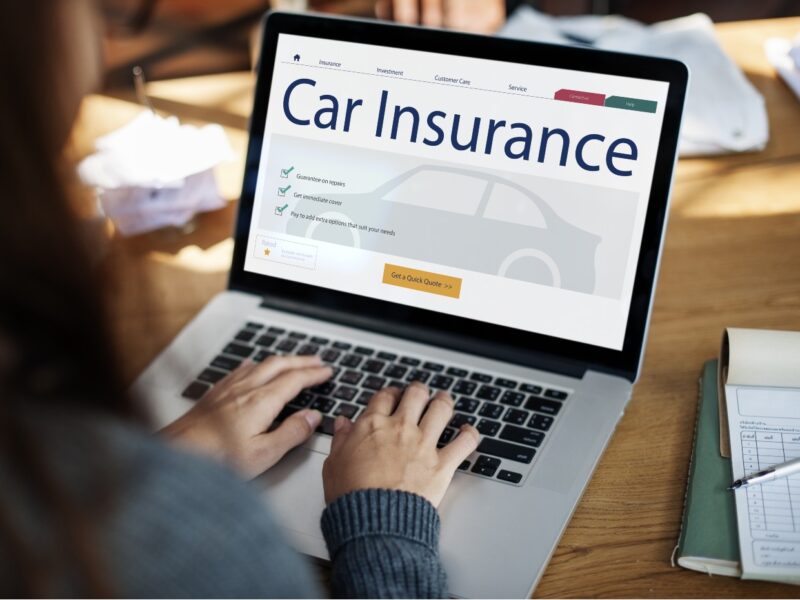This fault classification determines how your car accident claim will be handled
California is an At-Fault State for Car Insurance coverage, read on to understand exactly how this affects drivers in California. Laws regarding car accidents and auto insurance coverage vary from state to state, but there are two groups that each state can be categorized into – no-fault or at-fault.
The Difference Between No-Fault and At-Fault States
In no-fault states, a driver’s own auto insurance coverage pays for their damages, regardless of who caused the accident. Fault or causation does not necessarily come into play in terms of insurance claims. Even if the other driver was liable for the car accident, your insurance provider would cover your costs, and the other driver’s automobile insurer would cover theirs.
At-fault states approach car accidents and insurance coverage from a liability and negligence perspective. The insurer for the driver who caused the accident will be responsible for the other party’s damages, and should pay for each victim involved. There are caveats to this rule, but this is generally how car accidents and insurance claims work in at-fault states.
Determining Fault in At-Fault States
Oftentimes, the person found liable or at fault for the accident did not act out of malice or with any intent to cause harm. This doesn’t mean they are not responsible for the accident. Whether through negligence, recklessness, or carelessness, fault must be determined so an insurance claim can be made, and compensation can be given to those entitled.
Fault is sometimes easy to determine. Running a red light, rear ending a vehicle, driving under the influence, distracted driving, or otherwise driving dangerously and it leading to an accident, and would indicate fault. However, not every collision is caused by one single act or by easily identifiable factors.
California’s At-Fault System for Motor Vehicle Accidents
California is an at-fault state, meaning the insurance provider of the driver responsible for the car accident should cover the damages for all other parties with damages. More specifically, California uses a comparative fault system. This can make the process for recovering compensation or receiving a settlement a little more complicated.
Comparative fault says that more than one driver can be responsible for an accident. For example, perhaps one driver was speeding, but the other ran a red light. So, in these instances, who is liable for the damages caused by the car accident?
California’s system, and other state systems that use comparative fault, are intended to divide the fault between the parties based on the percentage of liability each share for the accident. Any compensation you are awarded as the plaintiff in a lawsuit would be reduced by your percentage of fault for the accident.
For instance, if you are awarded $75,000 in compensation and are found to be 20% at fault for the accident, you would ultimately only receive $60,000. That’s because 20% of $75,000 is $15,000, which is the amount that would be subtracted from your monetary award to deduct your percentage of fault.
The Plaintiff in a California case must prove that the Defendant’s negligence was a substantial factor in the accident and the harm that was caused. The total of all fault percentages must be equal to 100. Thus, if your liability is 10%, the other driver or responsible parties would have percentages that are equal to 90%.
California Car Accidents and Comparative Fault
When there are multiple drivers and involved parties, the likelihood of a comparative fault claim increases. Realistically, any car accident with more than one driver or party could be subject to the rules of comparative fault in California. This includes trucking accidents, collisions involving vehicle-bicyclist, and vehicle-pedestrian accidents.
Each person will likely try to point the blame at the other people involved in the accident, but it is not uncommon for non-drivers to be included, as well. Vehicle manufacturers, road construction workers, and cities or municipalities can also be named as an at-fault party in such accidents.
Paying for Damages After a Car Accident in California
As the plaintiff, you can receive compensation from one or multiple defendants; this is determined by how many other people or entities were at fault for your accident. If you are awarded compensation from more than one other party, you may be able to collect the amount you are entitled to from any of the parties; this is called joint and several liability. The defendants may then need to file cross complaints against each other to determine how the amount should be divided.
This type of liability only applies to economic damages, which include medical expenses, property damage, lost wages, and other out of pocket expenses.
Most people could not manage to pay out of pocket for all the costs associated with a car accident. To protect against these costs, auto insurance coverage is required in California. The minimum coverage amount in the state is $15,000 for one person’s injuries or death, $30,000 for injuries or death to more than one person, and $5,000 for any property damage. Often times this minimum coverage is not nearly sufficient to cover the actual damages in a motor vehicle accident. The minimum required coverage will increase in 2025.
Types of Damages in At-Fault States
The categories of damages you can claim do not change based on the fault system of a state. At-fault states differ from no-fault states in the way compensation can be claimed and awarded, but the types of damages remain the same.
Economic damages are easier to quantify because they often have a specific amount tied to them or a value is simple to determine. Examples of economic damages include:
- Present and future medical expenses;
- Medication costs;
- Rehabilitation treatments;
- Property damage;
- Lost wages; and
- Loss of future income.
Non-economic damages are not a set monetary amount; their value is more subjective. These include:
- pain and suffering,
- emotional distress,
- disfigurement, and
- loss of enjoyment of life
If someone else’s negligence led to your car accident injuries, California’s comparative and at-fault system could mean you will be awarded the compensation you deserve.
We offer California Auto Accident Victims a Free Consultation, and there are No Attorney’s Fees Unless We Recover Money for You
At The Hassell Law Group, our legal team are experts in car accident law and personal injury law with over 85 years of combined legal experience. We stand up to aggressive insurance companies and have a record of obtaining award-winning results for our clients. We fight every step of the way to achieve the best possible outcome for our car accident clients. We work on a contingency fee basis, which means you pay nothing unless we recover. There is no risk in hiring our law firm. Contact us today to schedule a free consultation and case evaluation. We welcome your questions, and our legal team looks forward to helping you obtain just and proper compensation for your personal injury claim.
Read next: How is fault determined in a car accident in California?
The general information provided on this website should not be considered legal advice and does not constitute legal advice. For legal advice, you should consult directly with an attorney. If you contact us by telephone, email, letter, or by contact form submission through this website, please note that such communication does not create or constitute an attorney-client relationship. We cannot act as your attorney until we are hired as your attorney by a formal written agreement.


 Ian Goldenberg, Esq. Joins The Hassell Law Group As Senior Attorney
Ian Goldenberg, Esq. Joins The Hassell Law Group As Senior Attorney